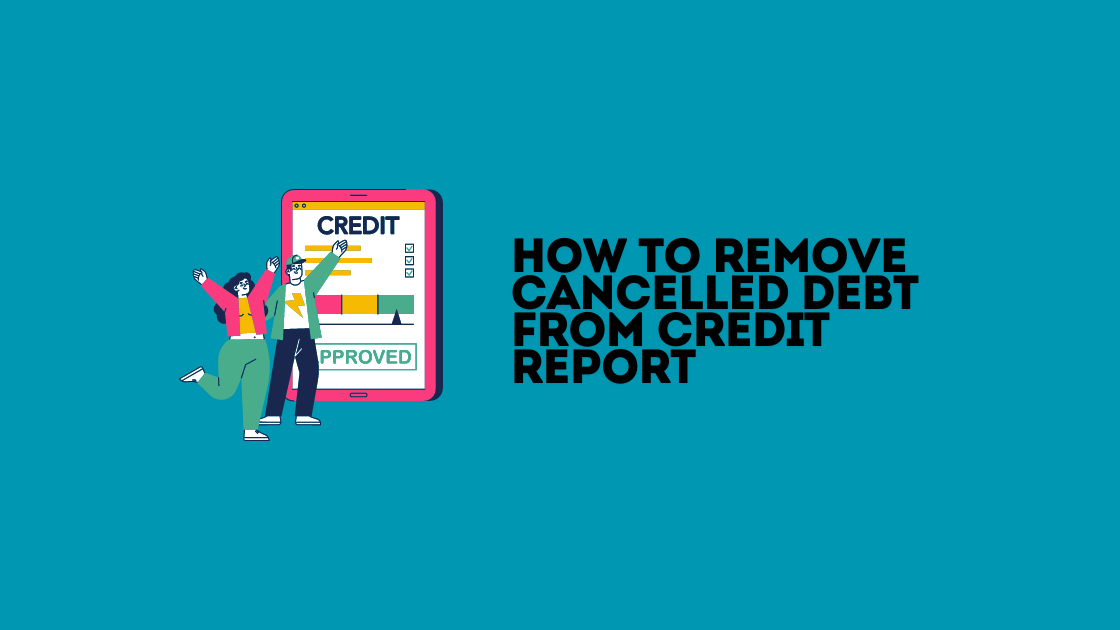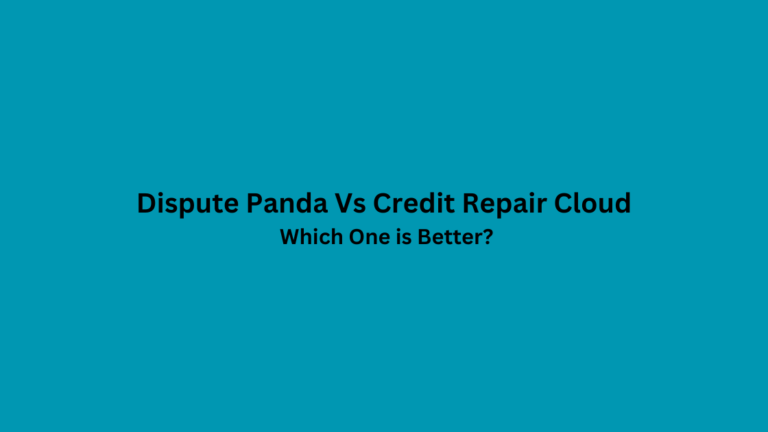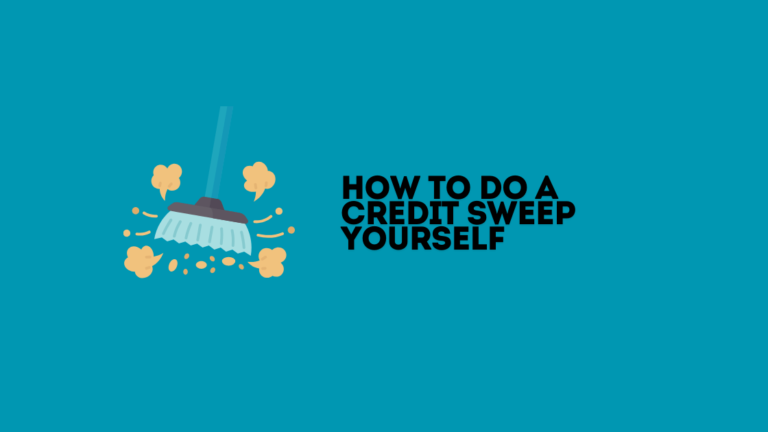How to Remove Cancelled Debt from Credit Report
To remove cancelled debt from your credit report, dispute the debt with credit bureaus. Provide documentation proving the debt cancellation.
Cancelled debt can negatively impact your credit score. Removing it from your credit report is crucial for financial health. Start by obtaining your credit report from major credit bureaus. Review it carefully for any inaccuracies or outdated information. If you find cancelled debt listed, gather all relevant documentation, such as letters from creditors.
Submit a formal dispute to each credit bureau, attaching your proof of debt cancellation. They have 30 days to investigate and respond. Monitoring your credit report regularly helps ensure accuracy and improves your financial standing. Taking these steps can help boost your credit score and improve your financial future.
Introduction To Cancelled Debt And Credit Reports
Cancelled debt happens when a lender forgives a part of your debt. This means you no longer owe that amount. While it sounds great, it can impact your credit report.
Your credit report records your financial activities. This includes loans, credit cards, and payments. A cancelled debt entry can appear here. Understanding this is crucial for maintaining a healthy credit score.
The Impact Of Cancelled Debt On Your Financial Health
Cancelled debt affects your financial health significantly. It might lower your credit score. A lower credit score can make it harder to get loans or credit cards.
Sometimes, cancelled debt can be seen as taxable income. This means you might owe taxes on the forgiven amount. Always check with a tax advisor about this.
The effect on your credit score depends on various factors. These include the amount of debt cancelled and your overall credit history. It’s important to monitor your credit report regularly.
Why It’s Crucial To Address Cancelled Debt On Your Credit Report
Addressing cancelled debt on your credit report is vital. It ensures your credit history is accurate. An accurate report helps you secure better interest rates for loans.
Incorrect entries can hurt your financial standing. They might make you appear riskier to lenders. Regularly review your credit report to spot and dispute any errors.
Properly managing cancelled debt entries can improve your financial future. It can lead to better opportunities for credit and loans.
:max_bytes(150000):strip_icc()/how-do-i-remove-charge-offs-from-my-credit-5075534-Final-820b5d6f77e1452eaa62351e6a08e89e.jpg)
Credit: www.investopedia.com
Identifying Cancelled Debt On Your Credit Report
Cancelled debt can affect your credit score. Identifying it on your credit report is crucial. This guide will help you understand the process.
Steps To Obtain Your Credit Report For Free
To spot cancelled debt, you need your credit report. Follow these steps:
- Visit AnnualCreditReport.com: This site offers free reports.
- Fill out the form: Enter your personal details.
- Choose your report: Select from Equifax, Experian, or TransUnion.
- Answer security questions: These verify your identity.
- Download your report: Save it for review.
Spotting Cancelled Debt Entries
Once you have your report, look for cancelled debt entries. These can appear in different sections:
- Account Information: Check for any accounts marked as “Cancelled” or “Settled”.
- Public Records: Look for entries under bankruptcy or tax liens.
- Collections: Cancelled debts may also be listed here.
Verify each entry carefully. Ensure it is accurate and valid.
| Section | What to Look For |
|---|---|
| Account Information | Terms like “Cancelled” or “Settled” |
| Public Records | Bankruptcy or tax lien entries |
| Collections | Any cancelled debt listed |
Spotting these entries helps you understand your credit status better.
Understanding The Legal Grounds For Removal
Knowing the legal grounds for removing cancelled debt from your credit report can save you time and stress. Some debts can be removed based on specific legal conditions. Learning these grounds helps you maintain a clean credit history.
Cancelled Debt That Qualifies For Removal
Not all cancelled debts should stay on your credit report. Some specific types of cancelled debt may qualify for removal:
- Errors or inaccuracies: Incorrect information must be corrected or removed.
- Debt discharged in bankruptcy: Such debt should not appear on your report.
- Debt forgiven through a settlement: Sometimes, settled debts can be removed.
Check your credit report for any of these issues. If you find any, contact the credit bureau to dispute the entry. Ensure you provide all necessary documentation to support your claim.
The Statute Of Limitations On Debt Reporting
The statute of limitations limits how long a debt can remain on your credit report. Generally, this period lasts for seven years. The countdown starts from the date of the first missed payment.
| Type of Debt | Reporting Time Limit |
|---|---|
| Credit Card Debt | 7 years |
| Installment Loans | 7 years |
| Medical Bills | 7 years |
After this period, the debt should be removed automatically. If it’s not, you can request its removal. Always keep track of the dates to ensure your credit report is accurate.
Gathering Necessary Documentation
To remove cancelled debt from your credit report, gathering the right documentation is crucial. You need to show proof that the debt was cancelled. This will help convince the credit bureaus to update your report.
Collecting Proof Of Debt Cancellation
First, find any letters or emails from your creditor. These should state that the debt has been cancelled. Cancelled debt letters are important as they serve as official proof.
Also, gather any court documents if the debt was dismissed legally. These documents provide solid evidence of debt cancellation. Keep copies of any communication with the creditor about the debt.
Here’s a simple list of documents to collect:
- Debt cancellation letters
- Emails from creditors
- Court documents
- Copies of communication with creditors
Organizing Your Financial Records
Next, organize your financial records to make the process smoother. This helps in quickly finding the required documents. Create a folder on your computer or a physical binder for this purpose.
Divide the documents into categories for easy access:
| Category | Documents |
|---|---|
| Debt Cancellation Proof | Letters, Emails, Court Documents |
| Communication Records | Emails, Letters, Notes from Calls |
Use labeled tabs or digital folders for each category. This will help you find any document quickly when needed.
Lastly, keep a checklist of all documents collected. This ensures you have everything before contacting the credit bureaus.
Disputing Errors With Credit Bureaus
Errors on your credit report can hurt your credit score. Disputing these errors can help fix your credit report. Removing cancelled debt can improve your financial health. Follow these steps to dispute errors with credit bureaus effectively.
How To File A Dispute
Filing a dispute involves contacting the credit bureau. You need to provide details about the error. You can file a dispute online, by mail, or by phone. Follow the bureau’s guidelines for submitting your dispute.
- Gather your credit report.
- Identify the errors.
- Choose your dispute method: online, mail, or phone.
- Submit your dispute with supporting documents.
What To Include In Your Dispute Letter
Your dispute letter should be clear and concise. Include the following information:
| Information | Details |
|---|---|
| Personal Information | Your name, address, and contact details. |
| Account Information | Account number and the name of the creditor. |
| Description of Error | Explain the error and why it is incorrect. |
| Supporting Documents | Include copies of any relevant documents. |
Here’s a sample dispute letter format:
[Your Name]
[Your Address]
[City, State, ZIP Code]
[Date]
[Credit Bureau Name]
[Credit Bureau Address]
[City, State, ZIP Code]
Dear [Credit Bureau],
I am writing to dispute an error on my credit report. The account in question is [Account Number] with [Creditor Name]. The error is [describe the error, e.g., "a cancelled debt that is still showing as unpaid"].
Attached are copies of [describe any enclosed documentation, e.g., "the letter from the creditor confirming the debt cancellation"].
Please correct this error on my credit report.
Sincerely,
[Your Name]
Credit: www.instagram.com
Negotiating With Creditors
Negotiating with creditors is a crucial step in removing cancelled debt from your credit report. Effective negotiation can help you reach an agreement to remove negative marks. This can improve your credit score significantly.
When To Approach Your Creditor
Timing is key when approaching your creditor for negotiation. Initiate the conversation as soon as you notice the cancelled debt on your credit report. Early action demonstrates your commitment to resolving the issue.
Contact your creditor after analyzing your financial situation. Be prepared with all necessary documents, including your credit report, income statements, and any relevant correspondence. This preparation will make your case stronger and more credible.
Tips For Successful Negotiation
- Be Honest and Transparent: Explain your financial situation clearly. Honesty builds trust and increases your chances of a favorable outcome.
- Offer a Lump Sum Payment: If possible, offer a lump sum payment. Creditors are often willing to negotiate if they receive immediate payment.
- Request a “Pay for Delete” Agreement: Propose a “pay for delete” agreement. This means you agree to pay the debt in exchange for the creditor removing the negative mark from your credit report.
- Stay Calm and Polite: Maintain a calm and respectful demeanor. Aggressiveness can hinder your negotiation efforts.
- Get Everything in Writing: Always get the agreement in writing. Written agreements provide legal protection and ensure clarity.
Follow these tips to increase your chances of successful negotiation. Removing cancelled debt from your credit report can lead to better financial health and peace of mind.
Monitoring Changes To Your Credit Report
After removing canceled debt from your credit report, it’s vital to monitor your credit report. This helps ensure the removed entries reflect correctly. Staying informed about changes can help you maintain a healthy credit score. Here’s how you can keep track.
Setting Up Alerts For Credit Report Updates
One effective way to stay informed is by setting up alerts for credit report updates. Many credit monitoring services offer this feature. These alerts notify you of any changes made to your credit report.
Benefits of setting up alerts:
- Instant notification of new entries or changes
- Quick response to potential errors
- Enhanced security against identity theft
To set up alerts, follow these steps:
- Choose a reliable credit monitoring service
- Sign up and provide necessary information
- Set your alert preferences
- Regularly check notifications
Assessing The Impact Of Removed Entries
After removing canceled debt, assess the impact of removed entries on your credit score. This can help you understand how your credit health has improved.
Here’s how to assess the impact:
- Request a new copy of your credit report
- Compare the new report with the old one
- Check for changes in your credit score
Using a credit score simulator can also be helpful. Many credit monitoring services provide this tool. It can show you the potential impact of removed entries on your score.
Remember, staying on top of your credit report is crucial. It ensures your credit score remains accurate and healthy.

Credit: www.experian.com
Maintaining A Healthy Credit Score Post-cancellation
Maintaining a healthy credit score after debt cancellation can be challenging. It requires strategic planning and consistent effort. Here are some key strategies to help you rebuild and maintain your credit score.
Strategies To Rebuild Your Credit
Rebuilding your credit score starts with understanding the factors that affect it. This includes payment history, credit utilization, length of credit history, new credit, and credit mix.
- Pay Bills on Time: Timely payments positively affect your credit score.
- Reduce Credit Card Balances: Lower balances improve your credit utilization ratio.
- Review Credit Reports: Regularly check for errors and inaccuracies.
- Use Secured Credit Cards: These can help rebuild your credit with responsible use.
- Keep Old Accounts Open: Longer credit history benefits your score.
Avoiding Future Debt Cancellation Scenarios
Avoiding future debt cancellation is crucial for maintaining a healthy credit score. Here are some steps to help you stay on track:
- Create a Budget: Track your income and expenses to avoid overspending.
- Build an Emergency Fund: Save for unexpected expenses to prevent debt accumulation.
- Use Credit Wisely: Only borrow what you can repay comfortably.
- Seek Financial Advice: Consult a financial advisor for personalized guidance.
By following these strategies, you can rebuild your credit and avoid future debt issues. Stay disciplined and proactive to maintain a healthy credit score.
Frequently Asked Questions
Does Cancellation Of Debt Get Removed From Credit Report?
No, cancellation of debt does not get removed from your credit report. It remains for seven years.
Can Discharge Debt Be Removed From A Credit Report?
Discharged debt can be reported for up to seven years. It cannot be removed from your credit report. Disputing errors may help.
How Do I Get Closed Debt Off My Credit Report?
Dispute inaccuracies with the credit bureaus directly. Provide supporting documents. Negotiate a pay-for-delete agreement with the creditor. Wait for the debt to fall off naturally after seven years. Consider working with a credit repair service for assistance.
Can Charged Off Debt Be Removed From Credit Report?
Yes, charged-off debt can be removed from a credit report. Dispute inaccuracies with credit bureaus or negotiate with creditors.
How To Dispute Cancelled Debt On Credit Report?
To dispute, gather evidence, contact the credit bureau, and submit a dispute letter explaining the error.
Conclusion
Taking steps to remove cancelled debt from your credit report can significantly improve your financial health. Stay diligent in monitoring your credit report and disputing errors. Consistent efforts will lead to a better credit score. Remember, a clean credit report opens doors to financial opportunities.
Keep your financial future bright by staying proactive.







